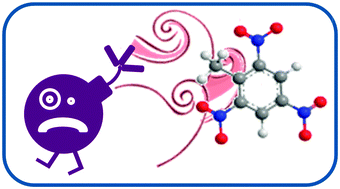Apparently, I’ve been a bad dog-parent. My pup, now 11, still loves to chase his tail, and after 11 years, I still find this endlessly amusing and giggle-inducing. Yes, I like the simple things. But apparently I’ve been reinforcing his clueless behavior even while I mocked it, at least according to a new article from PLoS ONE:
“I gathered data on the first large (n = 400), non-clinical tail-chasing population, made possible through a vast, free, online video repository, YouTube™. The demographics of this online population are described and discussed. Approximately one third of tail-chasing dogs showed clinical signs, including habitual (daily or ‘all the time’) or perseverative (difficult to distract) performance of the behaviour. These signs were observed across diverse breeds. Clinical signs appeared virtually unrecognised by the video owners and commenting viewers; laughter was recorded in 55% of videos, encouragement in 43%, and the commonest viewer descriptors were that the behaviour was ‘funny’ (46%) or ‘cute’ (42%). Habitual tail-chasers had 6.5+/−2.3 times the odds of being described as ‘Stupid’ than other dogs, and perseverative dogs were 6.8+/−2.1 times more frequently described as ‘Funny’ than distractible ones were… These findings highlight that tail-chasing is sometimes pathological, but can remain untreated, or even be encouraged, because of an assumption that it is ‘normal’ dog behaviour. The enormous viewing figures that YouTube™ attracts (mean+/−s.e. = 863+/−197 viewings per tail-chasing video) suggest that this perception will be further reinforced, without effective intervention.”
I’m nothing but an enabler! Plus, you can apparently now do science while watching silly animal videos on YouTube. What an age we live in!

Somebody set us up the bomb!
You don’t have to be a scientist to recognize that this is probably not the best abbreviation for ‘copper nanotubes’ or giggle like a 12-year-old at images like this, and that’s the beauty of the TOC ROFL Tumblog, a collection of silly, embarassing, unintentionally bawdy and just-plain-WTF graphical abstracts for chemistry research papers. It’s truly got something for everybody (with a perverse sense of humor).
And if you ARE a scientist or science writer, and you’ve actually seen figures and graphical abstracts like these before, well there’s just so much more to love. I remember the receptor complex slide I used to use in grad school that everybody but me thought looked like an angry robot, and my friend’s slide from his TB talk that showed a snapshot of a man sneezing where the dispersing vapor looked just like a giant breast… but these really take the cake. Just what were these editors thinking?
In a world where young’uns hurl around the phrase ROFL with excess and reckless abandon, I must say I came pretty close to literally ROFL for some of these. Hat tip to ‘In The Pipeline‘ for bringing this to my attention. As Derek Lowe rightly points out: “I’ve no idea who this is, but they’re helping, in their way, to make the world a better place.”
I love Retraction Watch. Sure, most of the time it depresses me, such as when they’re delving into the dirt under the bottom of the barrel of scientific misconduct, but sometimes there’s just pure comedy gold like this retracted article from Applied Mathematics Letters.
I’ll skip over the actual issues with the math in the paper (which is nowhere near my area of expertise) to focus instead on this gem of wisdom from the Discussion section:
Both science and spirituality came from space. Science is based on equations and experiments whereas spirituality relies on beliefs. The spirituality promises that everything in this universe was created in pairs but in opposites. For example, origin and end, man and women, light and dark, day and night, sorrow and pleasure, loss and gain, God and devil, ugly and beauty, good and bad and so on. Similarly, possible and impossible are consistent in mathematics.
Sure, I’ve seen some oddball outbursts buried in the conclusions of research articles before, but I dare you – DARE you – to read that excerpt without automatically mentally plugging in the sound of somebody taking a massive bong hit at the end. Wow.
But really, go read the whole post.
It’s a weird feeling for me when I see that an article I’ve covered is being retracted. I find myself wondering whether I should have asked more questions about the quality of the work – which may or may not be fair. But after all, these articles have (presumably) gone through peer-review by experts in the field (for whatever that may be worth) and been seen by many thousands of eyes before I got around to reading them, and it’s not like I’m replicating the experiments myself. But I still remember the gut-twinge I felt during the infamous Woo-Suk Hwang stem cell debacle, just a few months after I’d covered their team’s work in a two-page news feature.
Now it’s happened again – coincidentally, with another Science article. This time the circumstances are a bit weirder, though. To be sure, Ferrer and Golyshin were making a pretty big claim – by assembling chips containing arrays of more than 2500 fluorescently-labeled molecules, they hoped to essentially catalogue the various metabolic reactions being performed by a particular cell or microorganism. Their proof of concept, with the bacterium Pseudomonas putida, was an apparent success, but it wasn’t long before the trouble started.
» Continue Reading…
